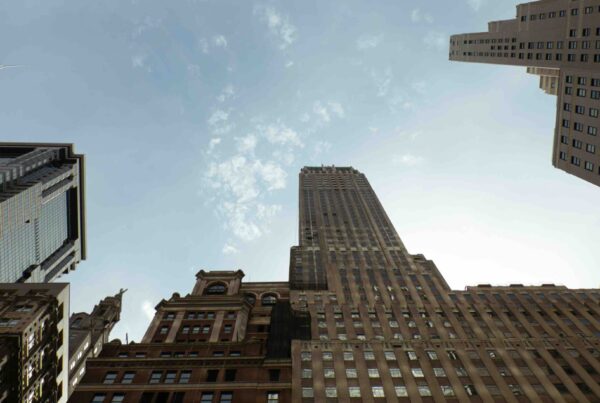With 40% Lower Sales Volume, NYC Multifamily Investors Question Next Move
10/18/2017
With sales numbers in for the first three quarters of 2017, it has given us an opportunity to look back over the year to make and share some insights into the market.
Overall, across all of New York City, 2017 multifamily sales volume is down approximately 40%. However, for property valued over $25 million, the number of transactions has declined approximately 50%. In addition to the decline in transactions, in properties above $25 million, we’ve seen the biggest adjustment in values with the average price per foot of property sold in that category down almost 10% (the average is $619 a foot across all boroughs). Below $25 million, in contrast, multifamily sales volume is down only 30% compared to last year, and prices are down approximately 6%.
Although there has been a slowdown in the number of sales and a softening somewhat in prices, by historical standards, values are still very high. The average cap rate for multifamily sales citywide is 4.1%, and the average price per unit in Manhattan is over $1 million! Even still, I expect the current pricing paradigm to persist into the future. Let me explain why.
Supply
Between 2017 and 2018, there will be approximately 50,000 new rental apartments delivered into the New York City marketplace. Primarily, those units will be delivered on Manhattan’s west side, downtown Brooklyn, and Long Island City. With the exception of these three areas, there are no neighborhoods which will be delivering significant amounts of new rental apartments. However, there will continue to be rehabilitated and repositioned buildings which offer “like new” units throughout the city. It’s hard to quantify accurately how many repositioned units are coming to market at any given time. Often, this repositioned rental product competes with new construction.

Demand
As shown on the graphs below, we are still in the middle of a demographic bubble of “renter age” population. This influx of renters will continue for several years. Further, homeownership rates continue to decline as millennials are more apt to rent than buy.
Overall, before pricing begins to rebound, rents must move up. From our numbers, it looks like that will occur around 2019 when the majority of the new supply and construction pipeline is absorbed. The good news is that after 2018, the pipeline of new construction drops off significantly.

![]()
Despite the market trends, our team has been extremely active this year, and we are on pace to sell almost 100 buildings in 2017. This is down about 9% from the number of buildings we sold last year.
We have found abundant capital searching for opportunities for well-located New York City multifamily properties. I look forward to your feedback, questions, and comments and wish you the best of luck for the remainder of 2017.
facebook LinkedIn Instagram Twitter




